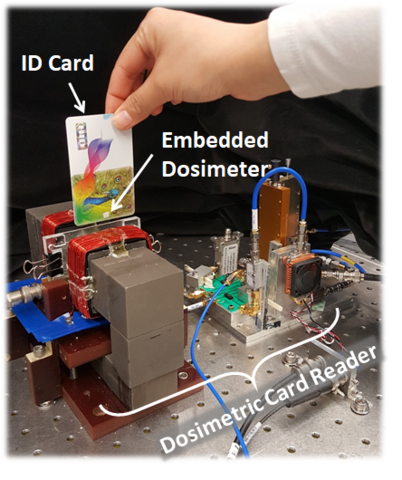Highly Sensitive Microwave Interferometric Detection of Ensembles of Electron Spins
Summary
The magnetic moment of an electron, often referred to as the electron’s spin, is a unique identifier of an electron’s atomic-scale environment. Thus, the electron spin can be used as a valuable marker to monitor the presence or absence of electrons trapped in these specific atomic-scale environments. This leads to a method to count populations of everything from electrons trapped in specific crystallographic point defects to the time evolution of optically generated electron-hole pairs, or excitons, in organic semiconductors. Considering the ubiquity of these electron spin markers, it might be surprising to realize that these measurements are mostly ignored. The ignorance is, in part, due to the remarkably small size of the electron’s magnetic moment and consequent measurement difficulty. The aim of this project is to develop sensitive detection methods which are honed to detect specific electron spin populations at room temperatures and pressures. The major enabler of this pursuit involves the implementation of microwave interferometric detection schemes which are coupled to a variety of local “antenna” probes which are placed nearby the materials of interest. The microwave interferometers sense the minute impedance changes seen by the antenna probes which are associated with the presence of specific populations of electron spins. Collectively, this provides a way to link changes in the ensemble populations of specific electron spins to a variety of external stimuli (radiation, light, temperature, etc.).
Description
This project has developed a rather simple microwave interferometry detection circuit (Fig. 1a) which can be coupled to a variety of microstrip transmission line probes to sense small impedance changes associated with specific electron spins. The interferometry circuit is of the Mach-Zehnder type and render its high sensitivity from the stable nulling of microwaves to greater than 1 part in 10 million. In other words, the interferometer amplifies any change in the antenna probe by 10 million, with almost no extra noise contribution. The circuit can be modified to work in both reflection and transmission modes and can be coupled to a variety of non-resonant custom transmission line antenna probes (Fig. 1b). The probes can be designed to impedance match to nearly any type of solid or liquid state samples and the non-resonant nature makes them inherently broad band. This simplified experimental scheme makes this approach amenable to a variety of sample compositions and geometries.

Such a microwave interferometer/transmission line probe has been coupled to a custom electron spin resonance spectrometer (Fig. 2) which is designed to be sensitive to specific free radicals that are generated in dosimetric materials which are subject to ionizing radiation. Measurement of the populations of these free radical populations this electron spin resonance “sensor” can then be used to retrospectively determine the dose of ionizing radiation that was received in the dosimetric material. Efforts are underway to embed these dosimetric materials in ubiquitous artifacts (government issued identification cards) that can be used as proxies for personal received dose in mass exposure events. The high sensitivity achieved from NIST’s approach opens the possibility to measure smaller ensembles of radiation-induced free radicals than are typically observable using conventional electron spin resonance spectrometers. The enhanced sensitivity translates to more reliable dosimetry measurements at lower doses of ionizing radiation (clinical range) and has provided a possible solution to retrospective personal dosimetry in the aftermath of a mass exposure event.

The microwave interferometer/transmission line probe approach has also been utilized in microwave conductivity measurements of optically generated charges in bulk organic semiconductor films. An interferometer circuit has been coupled to a variety of organic semiconducting layers through a co-planer transmission line probe. Optically-induced charge generation in these films then produces a singlet-triplet reaction kinetics which alters the conductivity of the film in complicated ways. The interferometer allows for a contactless sensitive measure of the change in microwave conductivity of the organic semiconductor film in response to the optical excitation. Moreover, these measurements are also observed as a function of in-plane magnetic field such that the nature and kinetics of the singlet-triplet reaction pathways can be probed. These observations may allow for a probe of the decoherence mechanisms of these optically induced charge pairs which may have implications to device efficiency.

